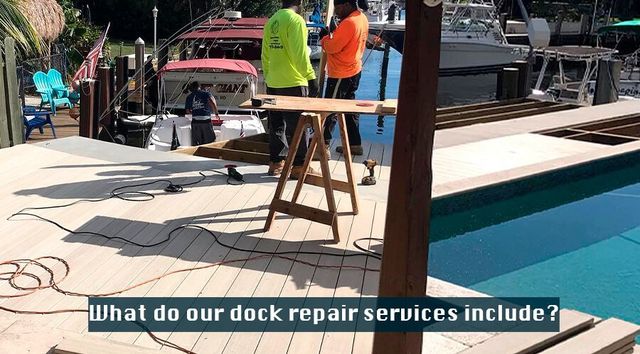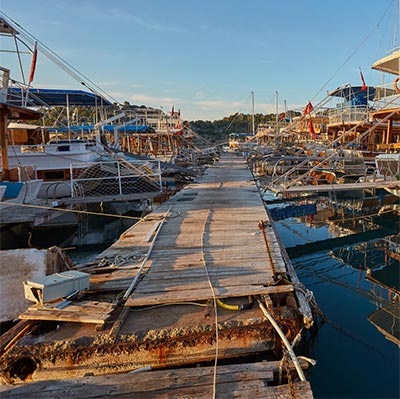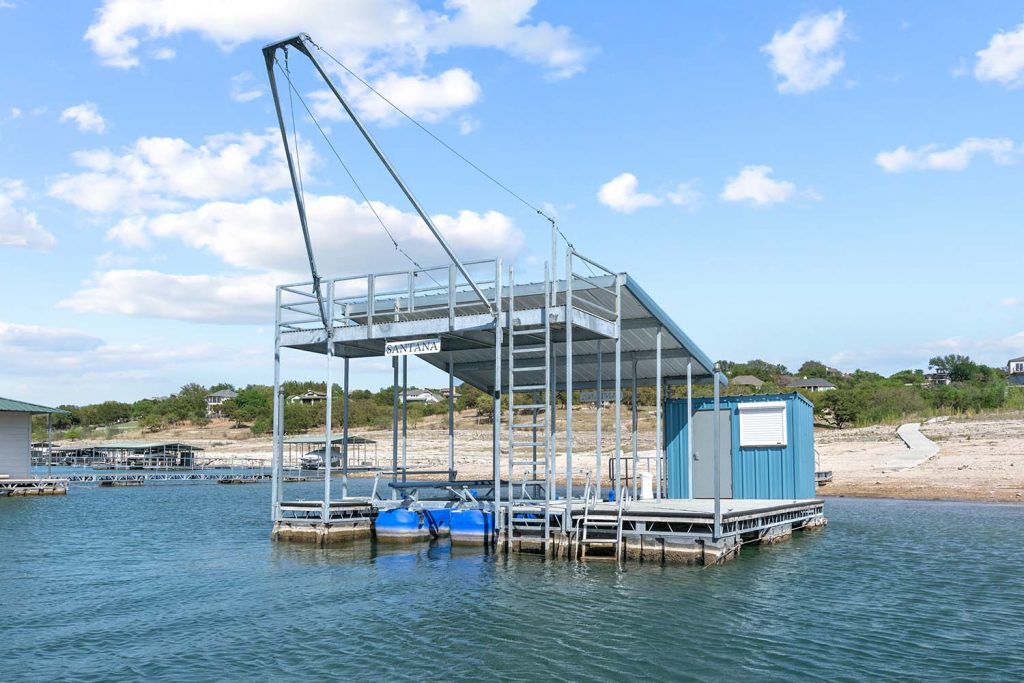How to Address Common Dock Repair Work Issues for Safe Water Tasks

Identifying Common Dock Issues
Recognizing usual dock issues is important for keeping the capability and security of your waterfront residential property. Normal inspections can aid discover issues prior to they come to be extreme, making certain both the durability of the dock and the safety and security of those that utilize it. One widespread issue is loosened or rusty fasteners. With time, screws, bolts, and other fasteners can come to be loose due to constant exposure to water and weather aspects, resulting in architectural instability.
One more usual problem is the deterioration of flotation devices. These gadgets are necessary for keeping the dock resilient, and any type of damages or slits can trigger the dock to list or sink. Regularly examining for leaks or water logged floats can preempt much more considerable issues.
Furthermore, algae and barnacle accumulation on the dock's surface can create unsafe and slippery conditions. This biofouling not only postures a threat to users however can likewise speed up the deterioration of the dock materials.
Lastly, checking for indications of corrosion on steel elements is important. Corrosion can endanger the honesty of the dock's framework, making it dangerous. By routinely recognizing these typical dock issues, you can guarantee that your dock stays practical and safe and secure for several years ahead.
Repairing Rotting Timber
When dealing with the concern of decaying wood on your dock, it is necessary to act swiftly to avoid more wear and tear. Begin by extensively inspecting the entire framework to recognize all impacted areas. Make use of a screwdriver to penetrate the wood; if it sinks in easily, the wood is most likely rotted and needs instant attention.
Be sure to cut back to healthy and balanced, strong timber, ensuring you remove all compromised material. After removal, deal with the continuing to be wood with a wood chemical to stop future rot.
Following, change the eliminated areas with marine-grade lumber or pressure-treated wood, which are a lot more immune to water damage. Safeguard the new pieces with galvanized or stainless-steel fasteners to stop rust. In addition, using a waterproof sealer to the brand-new wood can provide an added layer of protection.
Safeguarding Loosened Boards
Just how do you ensure your dock remains risk-free and practical for all its customers? One crucial facet is safeguarding loose boards, which can or else present significant dangers. Loosened boards not just increase the threat of stumbling yet can also endanger the structural integrity of the whole dock.

For reinstallation, utilize galvanized or stainless steel screws, as these products provide remarkable resistance to corrosion in marine environments. Make sure the screws are long enough to permeate deep right into the underlying assistance framework, but not as long that they protrude via the dock's surface area. Pre-drilling pilot holes can assist protect against the wood from splitting.
Finally, keep a routine assessment routine to determine and attend to any type of brand-new issues without delay. By safeguarding loosened boards successfully, you add to the overall safety and security and durability of your dock, making it a trusted system for water activities.
Maintaining Unsteady Pilings
Ensuring the security of unstable pilings is paramount to preserving a safe and practical dock. Unstable pilings can jeopardize the entire structure, positioning substantial risks to individuals and possibly leading to costly repairs. The primary step in maintaining these important components is weblink a thorough assessment. Take a look at the pilings for signs of rot, damage, or shifting. Make use of a degree to inspect for upright positioning and guarantee they are driven deep enough into the substratum to provide ample support.
If the pilings are discovered to be unsteady, one effective method for support is making use of additional bracing. Cross-bracing with treated lumber or galvanized steel can substantially improve stability. Anchor the braces securely to both the pilings and the dock structure to disperse loads equally.

Regular upkeep and regular reassessment of the pilings' stability are essential to making certain long-term dock safety and performance.
Replacing Rusty Equipment
Resolving unstable pilings is just one facet of keeping a dock's stability; one more essential problem is changing rusty equipment. Gradually, exposure to wetness and salt can lead to the oxidation and corrosion of bolts, brackets, and screws, compromising the entire framework's security. Routine assessment for corrosion is crucial, specifically after serious weather or seasonal adjustments.
When corroded equipment is determined, instant activity is called for. Begin by selecting marine-grade stainless steel or galvanized equipment, both developed to stand up to the rough marine environment. Make certain that you have the ideal devices, such as screwdrivers and wrenches, to safely get rid of the old, corroded pieces without creating additional damages to the dock.
After eliminating the corroded hardware, extensively tidy the influenced areas to eliminate any residual corrosion or debris. Use a rust-inhibiting primer to subjected metal surfaces before installing the brand-new hardware. Tighten up all fixtures securely to stop future helping to loosen, and periodically inspect the installations to pop over to this web-site make sure recurring security.
Replacing rusty equipment not only expands the dock's life expectancy yet likewise considerably enhances the safety of water tasks. By proactively taking care of rust, you safeguard both the structure and its users, guaranteeing a satisfying and safe waterside experience.
Final Thought
Normal assessments and maintenance are necessary to resolve common dock fixing concerns and guarantee risk-free water tasks. Such proactive actions contribute to the overall safety and security and performance of dock structures, promoting a secure atmosphere for water-based tasks.
Making certain the security of water tasks pivots substantially on the correct maintenance and fixing of anchors (Dock Repairs). These devices are important for maintaining the dock resilient, and any type of damage or punctures can trigger the dock to listing or sink. By regularly recognizing these typical dock issues, you can ensure that your dock continues to be functional and safe and secure for years to come
Making certain the security of unstable pilings is critical to maintaining a secure and practical dock.Regular assessments and maintenance are necessary to deal with common dock repair service concerns and make sure safe water tasks.